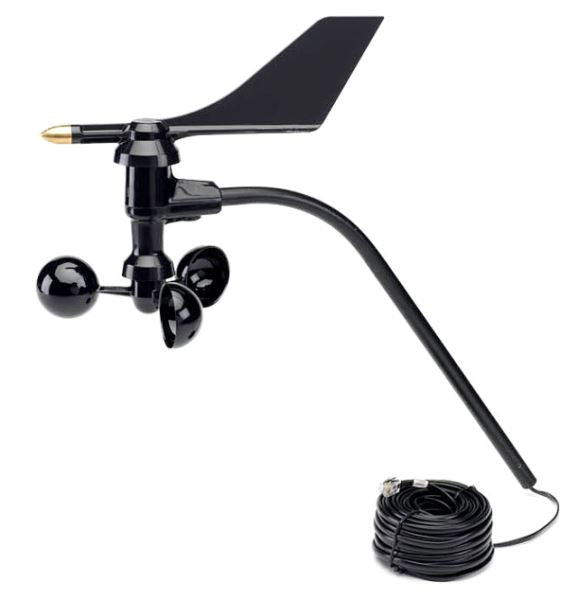Anemometer Innovations: The Current Modern Technology for Wind Rate Dimension
Wiki Article
All You Need to Find Out About Anemometers: Just How They Function, Why They Issue, and Where to Make use of Them
Anemometers, though usually ignored in the realm of scientific tools, play an essential role in different areas, supplying beneficial understandings into wind speed and airflow patterns. Comprehending the technicians behind these devices is vital for any person looking for to harness the power of this data. From meteorologists tracking climate patterns to engineers making structures with wind tons in mind, the applications of anemometers are significant and varied. As we delve into the details of anemometer innovation, we will certainly discover the inner workings of these gadgets, their relevance, and the essential factors to consider when selecting the right anemometer for details applications.
Anemometer Essentials
A vital instrument utilized to measure wind rate and instructions, the anemometer plays a vital duty in weather forecasting and different sectors. An anemometer typically consists of 3 or four mugs that rotate in the wind, a vane that directs into the wind, and sensing units to track the turnings or movements.
There are different kinds of anemometers offered, consisting of mug anemometers, vane anemometers, hot-wire anemometers, and sonic anemometers, each with its unique features and applications. Cup anemometers are commonly utilized for standard wind speed measurements, while vane anemometers are preferred for directional dimensions.
Concepts of Anemometer Procedure
Building on the foundational understanding of anemometer essentials, the principles of anemometer procedure illuminate the mechanics behind wind rate and instructions measurements. Anemometers operate the principle of air movement affecting a sensor, triggering it to rotate. Mug anemometers, for example, have three or even more cups that capture the wind, creating them to rotate faster as the wind speed boosts. The rotation rate is after that converted into a wind rate dimension. Vane anemometers, on the various other hand, make use of a tail or a probe that aligns itself with the wind instructions, supplying a measurement of wind instructions based on the positioning of the sensing unit. Hot-wire anemometers depend on a warmed cord that cools off as wind overlooks it, with the rate of cooling determining the wind rate. Ultrasonic anemometers measure wind rate and instructions by assessing the moment it takes for ultrasonic signals to travel in between transducers. Understanding these concepts is crucial for precise and dependable wind measurements in different applications.Importance of Anemometers
Anemometers play an important duty in measuring wind rate and direction, supplying vital information for weather condition projecting, environment studies, ecological monitoring, and aviation procedures. Meteorologists depend on anemometers to gather exact wind data, helping them recognize climate patterns, forecast storms, and problem timely warnings to the public. Wind ranch drivers utilize anemometers from this source to evaluate wind conditions and make the most of power manufacturing from wind generators.Applications Across Different Industries
Applications of anemometers extend throughout varied industries, showcasing their adaptability and utility beyond weather forecasting. In the renewable energy industry, anemometers play an important function in assessing wind conditions for wind ranch positionings, making certain ideal power production. Industries like building and construction and mining make use of anemometers to check wind speeds, crucial for security methods, specifically when operating at elevations or in open-pit mines where solid winds can position dangers. Anemometers are also indispensable in the aeronautics sector, helping pilots in recognizing airspeed and wind instructions for safe take-offs and landings. The maritime industry take advantage of anemometers for ship navigating, helping sailors expect climate useful reference modifications and readjust paths appropriately. In agriculture, anemometers help farmers in taking care of crop spraying by providing real-time data on wind rate to prevent drift. Anemometers find applications in A/c systems to optimize air movement and boost power effectiveness in structures. The diverse usage instances of anemometers underscore their value throughout various sectors, highlighting their essential function in enhancing operational safety and security and efficiency (anemometer).
Choosing the Right Anemometer for Your Requirements
For general purposes, a cup anemometer is suitable for gauging wind speed, while a vane anemometer offers wind instructions data. Hot-wire anemometers are excellent for reduced airspeed measurements, and ultrasonic anemometers offer high accuracy and resilience.
Verdict
In conclusion, anemometers play a critical duty in measuring wind rate and direction across different industries. It is essential to consider the importance of anemometers in order to make enlightened decisions when selecting the most appropriate device for measuring wind problems.There are various kinds check my blog of anemometers readily available, consisting of mug anemometers, vane anemometers, hot-wire anemometers, and sonic anemometers, each with its special features and applications. Cup anemometers are generally utilized for fundamental wind speed measurements, while vane anemometers are chosen for directional measurements. Hot-wire anemometers are appropriate for low airspeeds, and sonic anemometers are perfect for high-precision dimensions in study and commercial setups.Building on the fundamental understanding of anemometer essentials, the principles of anemometer procedure clarify the mechanics behind wind rate and direction dimensions. For basic purposes, a cup anemometer is suitable for determining wind speed, while a vane anemometer offers wind direction data.
Report this wiki page